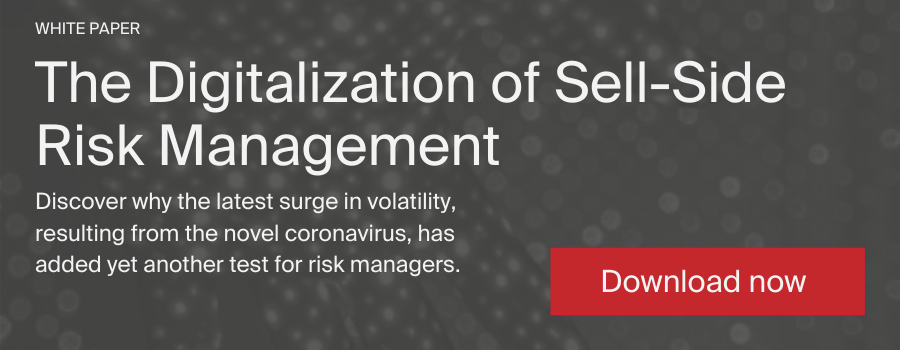
Real-time, event-driven processing technology has underpinned the front-office for many years, indeed decades, but many other parts of capital markets including risk management, continues to rely on batch-driven processing.
Finding out that a risk limit has been breached a day after it has taken place remains ‘best-practice’ for many organisations and it leaves firms open to levels of operational risk that can no longer be tolerated. Alan Kelly, Global Head of Risk Product at Torstone Technology explains why batch processing is no longer tenable in today’s cloud and open source dominated world, and what steps firms can take to create a true front-to-risk environment.
Feeling the Need for Speed
End-of-day and even trade date plus one day (T+1) risk reporting is still a commonplace practice in many firms. Companies run ‘batch processes’ after the last trade of the day which can take several hours to generate risk reports.
This is far from ideal for risk managers as they need to keep a close eye on trading positions with respect to how their aggregated risk exposures are kept within key risk limits. By only seeing aggregated risk exposures as a utilisation of the risk limit at the end of the day or even the following day, risk limits can be inadvertently breached for some time prior without intervention.
Bringing risk management closer to the point of trade execution through real-time risk is a game-changer for risk managers and gives intra-day visibility to situations of heightened risk to the firm. Additionally, it provides the trading desk with the ability to conduct what-if analyses to check if a certain trade exceeds risk limits, which ultimately provides a forward projection of risk that a batch-based process cannot provide. So, what is holding firms back from this ideal state?
Don’t Let Legacy Continue to Block Progress
Readers of this article will be aware of the push toward cloud and SaaS technologies in banking including the wide-spread adoption of services like AWS is increasing. But according to McKinsey, ‘among banking activities, one of the biggest areas of opportunity for cloud computing is risk management. At a time when risk management leaders are being asked to process greater amounts of data in shorter amounts of time—often amid budget and staff constraints—cloud computing could unlock considerable benefits.’
The advent of enabling open-source streaming technologies like Apache Kafka are modernising risk reporting. These platforms power event-driven processing that allow streams of parallel updates to operate concurrently. This approach leverages the cloud with compute nodes scaled to meet large-scale processing requirements more flexibly, dynamically, and automatically.
Event streaming platforms can work in many industries including manufacturing, telecoms, and healthcare. But when market data, security terms data, and trading positions are fed into them, real-time risk for financial institutions starts to become a reality.
Front-to-Risk: Within Reach
Of course, it is not as simple as procuring an AWS licence and an event streaming platform, plugging in various feeds, and voila — a real-time risk platform is up and running. For firms to view risk exposures that calculate as soon as market data or positions change, a powerful dependency engine is required. It is also essential that an extensive library of credit, fixed income, equity, and FX derivative pricing models can be called upon.
Additionally, it is crucial that in real-time risk management, the right information needs to get to the right people at the right time. Only then can risk managers discuss limit breaches with the responsible trading desk as soon as they happen and more importantly find a way to rectify the situation. Therefore, the output of a pricing model (theory price and Greeks) should be used to generate a stream of risk exposures, displayed via easily accessible ticking data for all relevant people to see.
This is not to say real-time risk is most beneficial as a stick to beat the trading team with. Communication is the name of the game here to bring risk management closer to the point of execution and achieving a true front-to-risk system.
For example, a particular limit break could be caused by a position that cannot currently be traded, because it is illiquid, and so expectations need to be managed around the fact this limit break could continue for some time. Or it may be the front office can trade out of a position to reduce the exposure in this limit category. Ideally, limit breaches would be reduced as soon as possible to limit the potential harm the company could be exposed to if markets moved adversely, and that can only happen if everyone is on the same page at the same time.
It's time to invest in a scalable real-time risk system that can support arbitrary client portfolios in a SaaS environment - a necessity to ensure firms can finally say goodbye to the unfit-for-purpose batch-based approach of the past. Helping our clients to see limits and key metrics ticking in real-time and anticipating breaches before they happen for example, are just two of the reasons this is a big area of focus for us at Torstone – and one we are adding value to. If you would like to learn more about our work in this area, don’t hesitate to get in touch.
.jpg)




